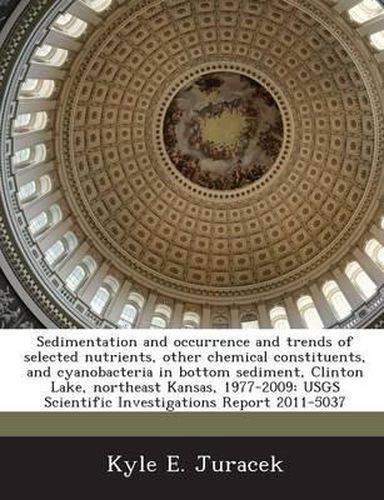Readings Newsletter
Become a Readings Member to make your shopping experience even easier.
Sign in or sign up for free!
You’re not far away from qualifying for FREE standard shipping within Australia
You’ve qualified for FREE standard shipping within Australia
The cart is loading…






A combination of available bathymetric-survey information and bottom-sediment coring was used to investigate sedimentation and the occurrence of selected nutrients (total nitrogen and total phosphorus), organic and total carbon, 25 trace elements, cyanobacterial akinetes, and the radionuclide cesium-137 in the bottom sediment of Clinton Lake, northeast Kansas. The total estimated volume and mass of bottom sediment deposited from 1977 through 2009 in the conservation (multi-purpose) pool of the reservoir was 438 million cubic feet and 18 billion pounds, respectively. The estimated sediment volume occupied about 8 percent of the conservation-pool, water-storage capacity of the reservoir. Sedimentation in the conservation pool has occurred about 70 percent faster than originally projected at the time the reservoir was completed. Water-storage capacity in the conservation pool has been lost to sedimentation at a rate of about 0.25 percent annually. Mean annual net sediment deposition since 1977 in the conservation pool of the reservoir was estimated to be 563 million pounds per year. Mean annual net sediment yield from the Clinton Lake Basin was estimated to be 1.5 million pounds per square mile per year. Typically, the bottom sediment sampled in Clinton Lake was at least 99 percent silt and clay.
$9.00 standard shipping within Australia
FREE standard shipping within Australia for orders over $100.00
Express & International shipping calculated at checkout
A combination of available bathymetric-survey information and bottom-sediment coring was used to investigate sedimentation and the occurrence of selected nutrients (total nitrogen and total phosphorus), organic and total carbon, 25 trace elements, cyanobacterial akinetes, and the radionuclide cesium-137 in the bottom sediment of Clinton Lake, northeast Kansas. The total estimated volume and mass of bottom sediment deposited from 1977 through 2009 in the conservation (multi-purpose) pool of the reservoir was 438 million cubic feet and 18 billion pounds, respectively. The estimated sediment volume occupied about 8 percent of the conservation-pool, water-storage capacity of the reservoir. Sedimentation in the conservation pool has occurred about 70 percent faster than originally projected at the time the reservoir was completed. Water-storage capacity in the conservation pool has been lost to sedimentation at a rate of about 0.25 percent annually. Mean annual net sediment deposition since 1977 in the conservation pool of the reservoir was estimated to be 563 million pounds per year. Mean annual net sediment yield from the Clinton Lake Basin was estimated to be 1.5 million pounds per square mile per year. Typically, the bottom sediment sampled in Clinton Lake was at least 99 percent silt and clay.